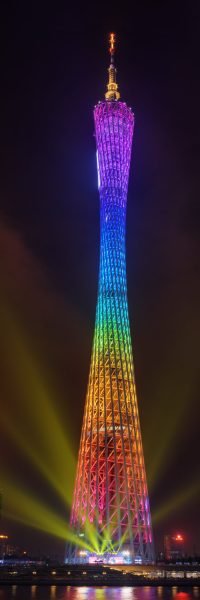Fundamentals
Fundamentals Of Facade Lighting
Facade lighting is an art and science that combines aesthetics, functionality, and technical considerations. Here are some fundamental aspects to keep in mind:
✦ Purpose and Goals
Define the objectives of the lighting design – whether its to highlight architectural features, enhance security, or create a specific mood or ambiance.
✦ Lighting Techniques
● Grazing: Light projected along the surface of the facade to emphasize texture and details.
● Washing: Light is spread evenly over a wide area, creating a smooth, diffused effect.
● Spotlighting: Focused light is used to highlight specific architectural elements or features.
● Backlighting: Light is placed behind an object or surface, creating a silhouette or halo effect.
✦ Light Sources
We choose appropriate light sources such as LEDs, which offer energy efficiency, longevity, and versatility in colour and intensity.
✦ Control System
We implement advanced control systems to adjust lighting based on time of the day, weather conditions, and occupancy, enhancing energy efficiency and user experience.
✦ Colour Temperature and Rendering
We select the right colour temperature (measured in Kelvin) and ensure good colour rendering to enhance the appearance of the building and its surroundings.
✦ Environmental Impact
We consider light pollution, energy consumption, and the use of sustainable materials to minimize environmental impact.
✦ Maintenance and Durability
We plan for the long-term maintenance of the lighting system, choosing durables and weather-resistant fixtures that can withstand local climatic conditions.
✦ Safety and Compliances:
We ensure the lighting design adheres to local regulations and safety standards, providing adequate illumination without causing glare or hazards.
By considering these fundamentals, we create a facade lighting design that is both beautiful and functional, adding value to the building and its surroundings.



